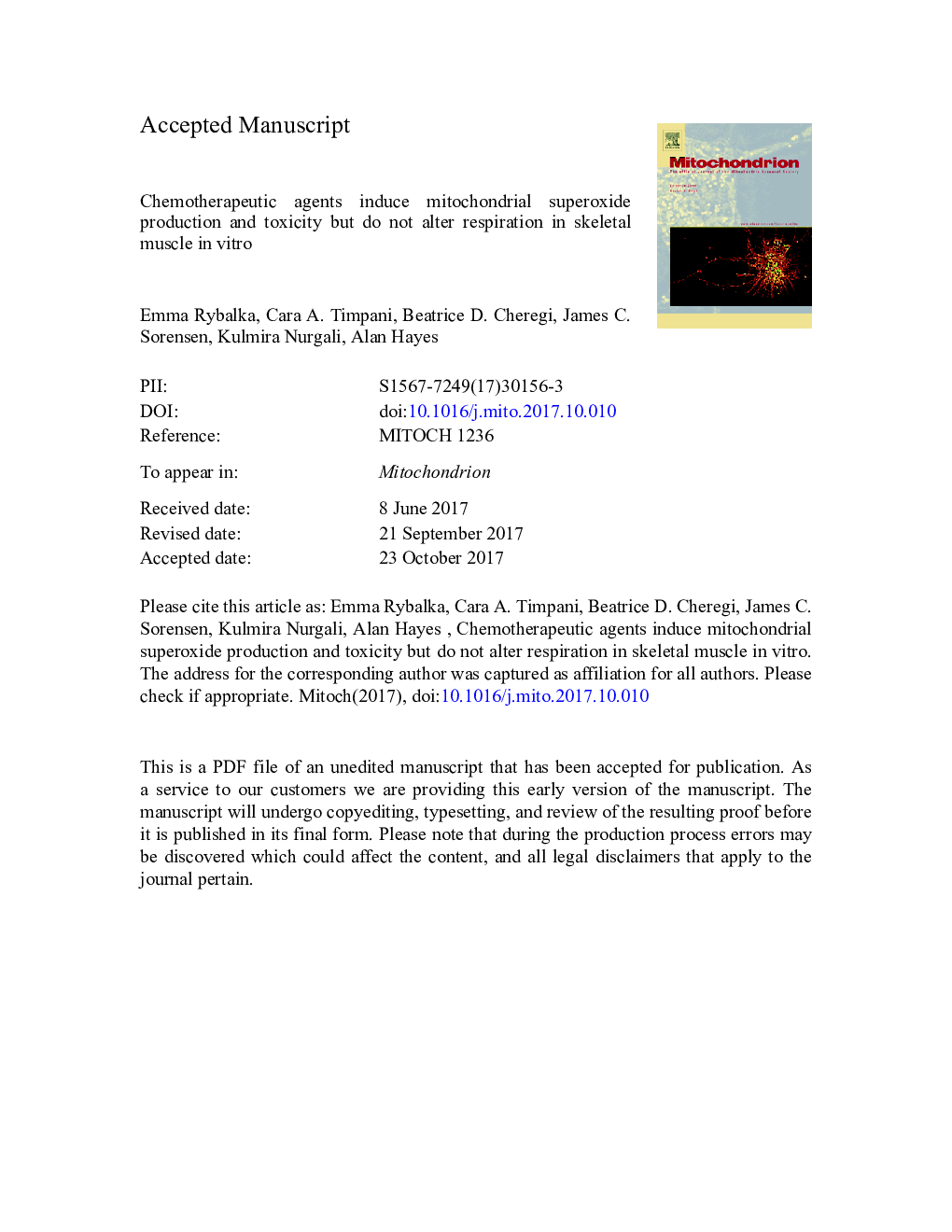| Article ID | Journal | Published Year | Pages | File Type |
|---|---|---|---|---|
| 8962081 | Mitochondrion | 2018 | 50 Pages |
Abstract
Chemotherapeutic agents (CAs) can independently promote skeletal muscle dysfunction, fatigue and wasting with mitochondrial toxicity implicated as a possible mechanism. Thus, we aimed to characterise the effects of various CAs on mitochondrial function, viability and oxidant production in C2C12 myoblasts and myotubes. All CAs significantly reduced the viable mitochondrial pool but did not affect mitochondrial functional parameters. Doxorubicin and oxaliplatin increased oxidant production in myotubes while all CAs, except for irinotecan, increased oxidant production in myoblasts and reduced myotube diameter. Our data demonstrate CAs mito-toxic effects, highlighting the potential for mitochondria-protective therapeutics to address chemotherapy-induced skeletal muscle damage.
Keywords
CASDifferentiation mediaO2–5-FlurouracilUCP3OCR5FUmtROSECARFCCPQOLCu2 +ANTDMEMDOXQuality of lifeDMSODulbecco's modified Eagle's mediumROSΔψHydrogen peroxideAtrophyOxaliplatinIrinotecananalysis of varianceANOVAadenine nucleotide transporterstandard error of the meanDoxorubicinDimethyl sulfoxideGrowth mediaelectron transport chainSODSuperoxideSuperoxide dismutaseChemotherapySkeletal muscleChemotherapeutic agentsSEMMitochondriaOxygen consumption rateextracellular acidification rateH2O2ETcMitochondrial membrane potentialUncoupling protein 3Carbonyl cyanide-4-(trifluoromethoxy)phenylhydrazonemitochondrial reactive oxygen speciesReactive oxygen species
Related Topics
Life Sciences
Biochemistry, Genetics and Molecular Biology
Biophysics
Authors
Emma Rybalka, Cara A. Timpani, Beatrice D. Cheregi, James C. Sorensen, Kulmira Nurgali, Alan Hayes,
